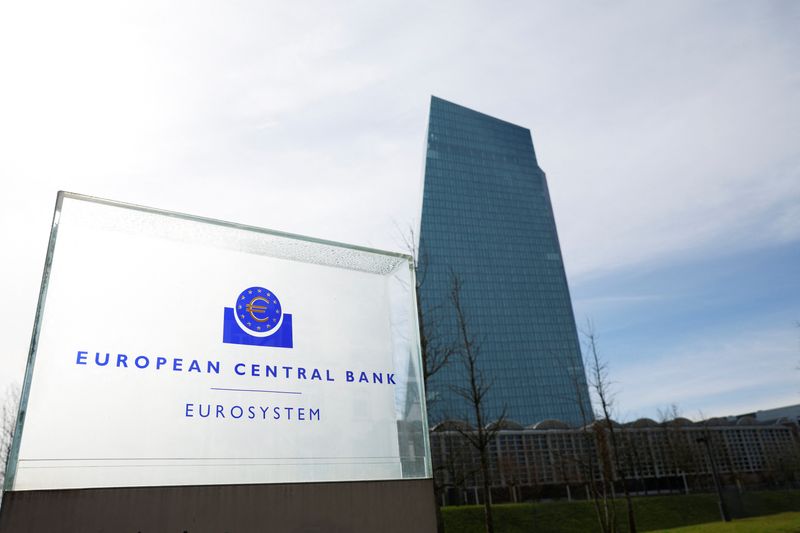MILAN (Reuters) -The European Central Bank is considering whether requirements tailored for individual lenders could help address the risks arising for those holding large amounts of uninsured deposits, a document showed.
A paper ECB supervisors prepared for this week's meeting of euro zone finance ministers said recent banking turmoil showed "increased attention needs to be paid to the liquidity and funding risk outlook of the sector as monetary policy shifts to a new regime."
The ECB said it was actively working with other global supervisors to understand which lessons could be learnt.
Deposit flights have caused the failure of some U.S. regional banks and forced Switzerland to orchestrate Credit Suisse (SIX:CSGN)'s rescue by rival UBS.
"It may be beneficial to explore how factors such as high deposit base concentration and a predominant reliance on uninsured deposits could be dealt with in the Pillar 2 framework," the ECB said.
Most European Union countries have some form of national insurance that guarantees deposits up to 100,000 euros ($110,080).
The Pillar 2 framework is a supervisory process aimed at ensuring each lender has adequate capital and liquid asset holdings based on its specific risk profile.
The ECB can impose additional capital and liquidity requirements if it sees fit. It would use liquidity requirements to address liquidity risks.
The Pillar 2 liquidity framework focuses on liquidity risks that are not fully addressed by Pillar 1 requirements: the Liquidity Coverage Ratio (LCR) and the Net Stable Funding Ratio (NSFR).
The LCR forces banks to hold high-quality assets (HQLA) they can convert into cash, either through a sale or by pledging them as collateral, to cover cash outflows over a 30-day period.
Banks mostly hold government bonds as HQLA, but rising interest rates have curtailed the value of these holdings, so for example Silicon Valley Bank suffered a major capital hit when it sold U.S. Treasuries to offset deposit flights.

"Areas of focus include some elements of the calibration of the LCR and the extent to which assets held at amortised cost, which may be difficult to sell without suffering losses when liquidity needs arise, can qualify as HQLA," the paper said.
($1 = 0.9084 euros)